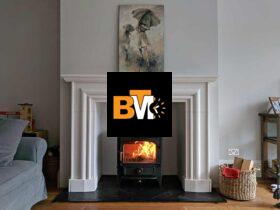Creating a child’s bedroom that reflects their personality and interests can be a fun and rewarding project. Personalizing your child’s bedroom with DIY projects is a perfect way to showcase their creativity and make the space uniquely theirs. From crafting custom wall art to building furniture that doubles as play areas, there are endless possibilities to transform a simple room into a magical haven.
Whether it’s adding a name feature to wall art or designing a cozy reading nook, DIY projects offer an affordable and personalized way to decorate a child’s bedroom. For example, constructing a house-shaped bed can make the room more playful while ensuring comfort. Explore various quality kids beds to find the perfect fit for your creations.
Incorporate elements like bright colors, themed decor, and interactive play areas to enhance the room’s charm. Tailor the projects to your child’s hobbies and interests, ensuring the room is both practical and enchanting. By doing so, you create a space they will love and feel comfortable in, promoting both play and relaxation.
Key Takeaways
- Personalize the room with DIY projects reflecting the child’s interests.
- Utilize quality kids beds and multifunctional furniture for both play and comfort.
- Ensure the design promotes creativity and practicality in the child’s space.
Planning and Designing Your DIY Bedroom Project
Creating a personalized bedroom for your child involves careful planning and a thoughtful design approach. Key areas to focus on include evaluating the space and needs by age, choosing a cohesive theme and color scheme, and incorporating functional furniture.
Evaluating the Space and Needs by Age
Assessing the space and age of the child is crucial to ensure the design meets their current and future needs. For a baby, consider ample storage for diapers, clothes, and toys. Adding a rocking chair can be beneficial. For a toddler, safety is essential, so look for sturdy furniture with rounded edges. School-aged children need study areas and more organized storage, while older children might appreciate a space for hobbies and relaxation.
Take dimensions of the room to determine what furniture will fit comfortably without overcrowding. Keep in mind the possibility of rearranging the layout as the child grows. Ensure the space remains both functional and aesthetically pleasing at all stages.
Choosing a Cohesive Theme and Color Scheme
Selecting a cohesive theme and color scheme helps create a unified look that is visually appealing. For a baby’s room, soft pastels and gentle themes such as animals or nature work well. Toddlers often enjoy more vibrant colors and playful themes like dinosaurs or fairy tales. School-aged children might prefer themes aligned with their interests, such as sports or space.
To maintain harmony, choose two to three main colors and use them consistently throughout the room, including the walls, furniture, and decorations. You can add accents in complementary colors to give the room depth and character. Avoid overly trendy themes that may quickly become outdated as your child’s tastes evolve.
Incorporating Functional Furniture
Furniture should be both functional and suitable for the child’s age. For babies, multi-functional pieces such as cribs that convert to toddler beds are practical. Storage solutions like dressers with changing table capabilities can save space. Toddlers need accessible storage for their toys and books, which can be achieved with low shelves and bins.
School-aged children benefit from desks for homework and study, and older children might appreciate a comfortable seating area for reading or relaxation. Consider furniture that adapts as your child grows, such as adjustable shelving, modular units or mid sleeper beds, which elevate the sleeping area to a mid-level height, creating usable space underneath for storage, play, or study. This approach ensures the room remains functional and relevant through different stages of childhood.
Implementing DIY Decor and Organization
Creating a personalized and organized space for your child can encourage creativity, comfort, and study habits. This can be achieved through handmade decor, DIY organizational solutions, and budget-conscious makeovers.
Creating Handmade Wall Art and Accents
Handmade wall art offers unique self-expression opportunities. Simple projects can include framed prints, stencils, and painted murals. For example, using scrapbook paper, one can craft a gallery wall showcasing a child’s favorite characters.
A wall mural or vibrant coat of paint adds personality to the space. Name signs and custom window decals can provide personal touches. Fairy lights create a magical atmosphere, while posters of sports or hobbies inject a bit of individuality and adventure.
Organizing with DIY Projects
DIY organizers help manage clutter and enhance functionality. Utilizing under-bed storage bedframes, toy bins, and shelves for books can maximize space. Creating custom storage solutions like a play kitchen or a loft bed with built-in storage facilitates organization.
Magnetic boards and chalkboards serve dual purposes for learning and scheduling. Incorporating textiles, such as rugs and comfy seating, defines areas for relaxation and play, making the room more inviting. Labeling storage boxes can teach kids organization skills.
Engaging in Budget-Friendly Makeovers
Repurposing old furniture saves money and adds character. A fresh coat of paint can transform dressers or bookshelves to match new decor themes. Adding new hardware or decals to furniture can create a cohesive look.
Accessorizing with inexpensive items like rugs, pillows, or wall art bought on Instagram or Pinterest can refresh a room without breaking the bank. Incorporating neutral colors ensures versatility, while pops of vibrant colors can stimulate imagination and play. Encouraging your child to participate in projects fosters a sense of ownership and creativity.
Conclusion
Personalizing your child’s bedroom with DIY projects can transform their space into a unique and engaging environment. These projects allow for creativity and bonding while catering to your child’s tastes and needs. Embracing DIY customizations ensures each element reflects their personality, making the space truly special. With careful planning, parents can create a functional, fun, and personalized room.







Leave a Reply